There’s something magical about watching warm chocolate frosting cascade over a freshly baked sheet cake, creating that signature crackly top that practically begs for your fork. Having grown up in a household where dessert was considered a legitimate food group, I still remember the first time my grandmother unveiled her Texas Sheet Cake at a family reunion. That moment—watching thirty pairs of eyes widen simultaneously—taught me the true power of a perfectly executed chocolate dessert.
Texas Sheet Cake occupies a special place in American baking lore. Not quite a traditional cake, not quite a brownie, this thin, moist chocolate cake topped with warm poured frosting has been the centerpiece of Southern gatherings for generations. What makes it truly special? It’s the rare dessert that somehow manages to be both elegantly simple and utterly irresistible.
In this guide, we’ll explore everything from the cake’s humble origins to expert techniques that guarantee success. Whether you’re a seasoned baker or trying your hand at this classic for the first time, prepare to discover why this unpretentious chocolate masterpiece continues to captivate dessert lovers nationwide.
Table of Content
- What Is Texas Sheet Cake and Why Should You Make It
- Texas Sheet Cake Ingredients: What You'll Need
- How to Make Texas Sheet Cake at Home
- Pro Tips for Texas Chocolate Sheet Cake Success
- Storage and Serving Recommendations
- Nutrition Information and Considerations
- Other Breakfast Recipe
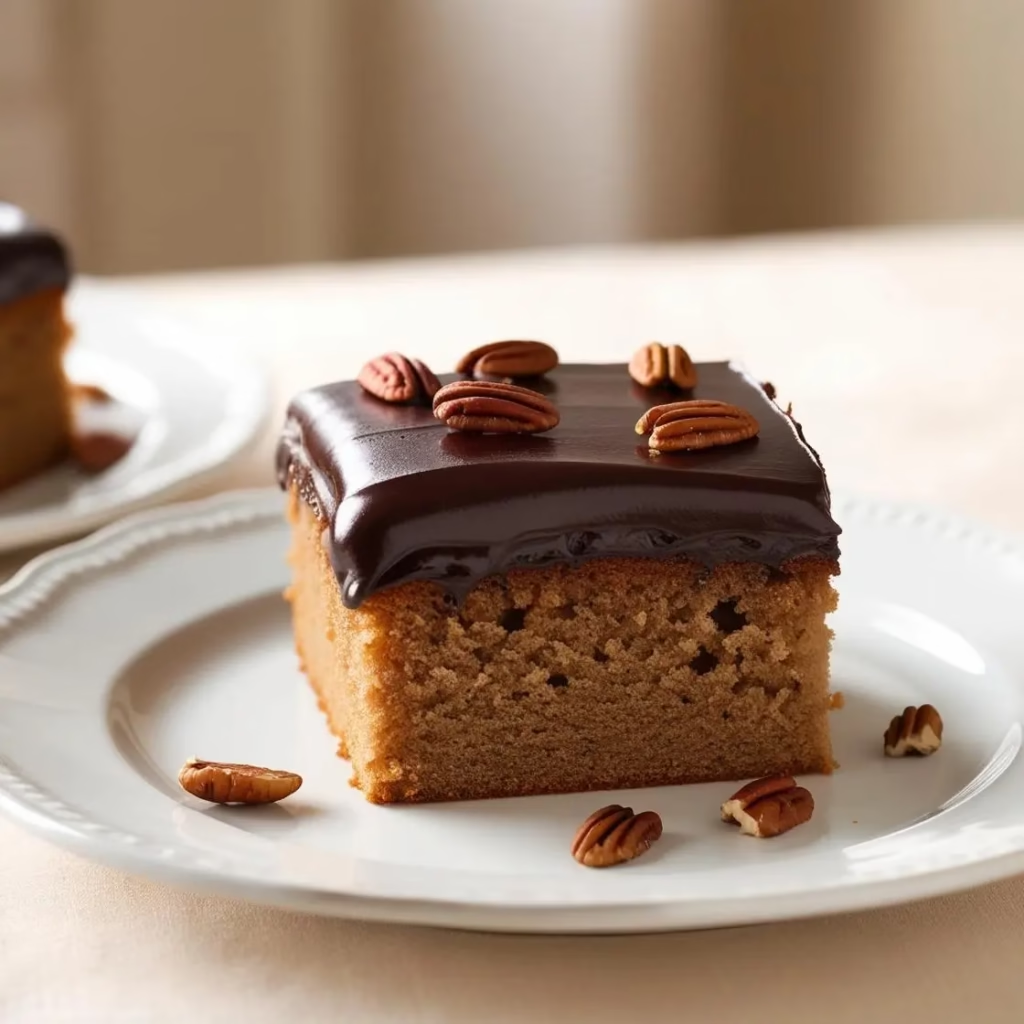
What Is Texas Sheet Cake and Why Should You Make It
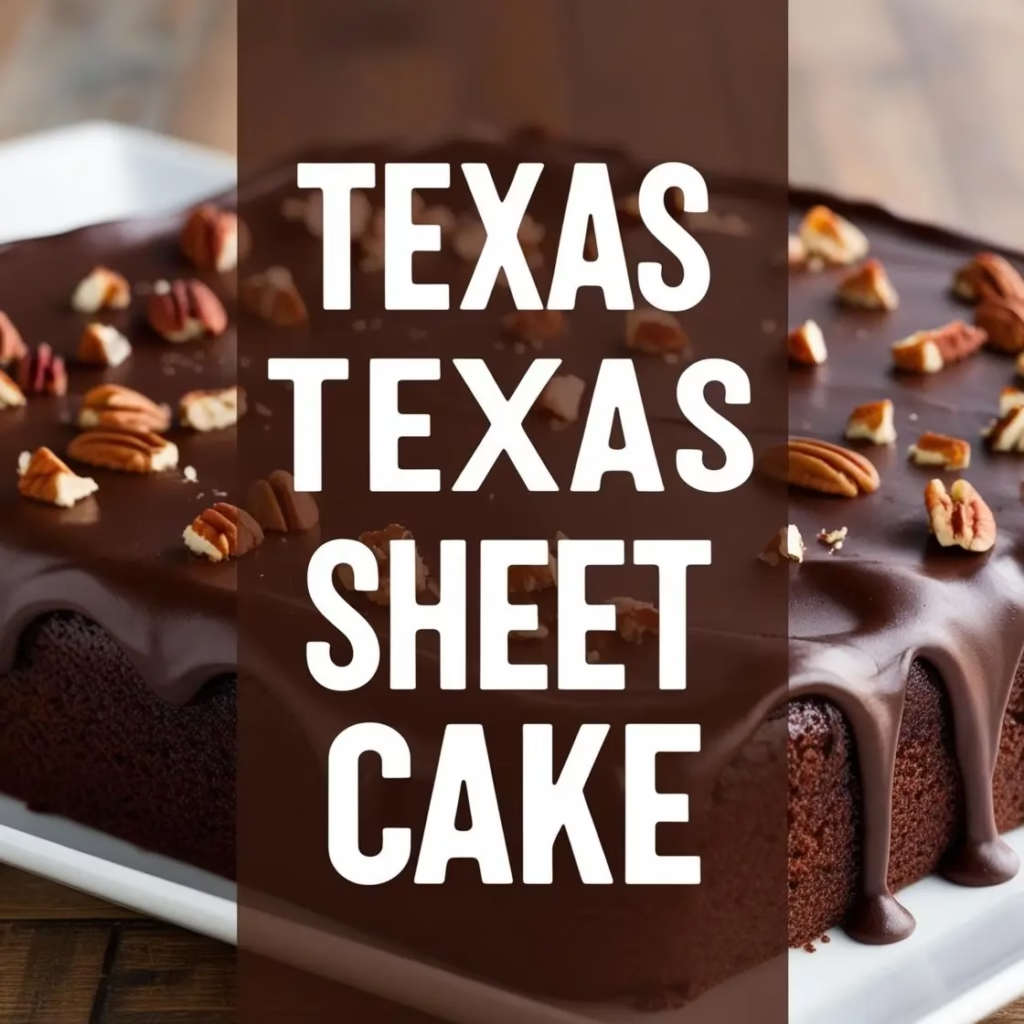
Texas Sheet Cake is a thin, single-layer chocolate cake baked in a sheet pan and covered with a poured chocolate frosting while still warm. This unique preparation method allows the frosting to slightly melt into the cake, creating a distinctive texture that’s neither fully cake nor brownie, but something gloriously in between.
What distinguishes Texas Sheet Cake from other chocolate cakes are several key characteristics:
- The thin, rectangular format that ensures even baking and perfect frosting-to-cake ratio
- The use of buttermilk for exceptional tenderness and subtle tanginess
- The inclusion of cinnamon, which adds depth to the chocolate flavor
- The technique of pouring warm frosting over warm cake, creating a unique texture
- The addition of pecans in the frosting (though variations exist)
Texas Sheet Cake Ingredients: What You’ll Need
For the Cake
- All-purpose flour (2 cups): The foundation of our cake, providing structure without heaviness
- Granulated sugar (2 cups): For sweetness and moisture retention
- Unsalted butter (1 cup): Creates richness and tender crumb
- Water (1 cup): Helps dissolve cocoa powder for even distribution
- Unsweetened cocoa powder (¼ cup): Provides the deep chocolate flavor
- Buttermilk (½ cup): The secret ingredient that tenderizes the crumb and adds subtle tang
- Eggs (2 large): Provide structure, richness, and binding
- Baking soda (1 teaspoon): Leavening agent activated by buttermilk’s acidity
- Salt (½ teaspoon): Enhances flavors and balances sweetness
- Vanilla extract (1 teaspoon): Deepens the chocolate profile
- Ground cinnamon (½ teaspoon): The subtle background note that defines authentic Texas Sheet Cake
For the Frosting
- Unsalted butter (½ cup): Creates a rich, smooth base
- Milk (⅓ cup): Provides proper consistency
- Unsweetened cocoa powder (¼ cup): For chocolate flavor
- Powdered sugar (3½ cups): Sweetens and creates proper texture
- Vanilla extract (1 teaspoon): Rounds out flavor profile
- Chopped pecans (1 cup, optional): Traditional Texas addition for texture and nutty flavor
Equipment Needed
- Jelly roll pan/sheet pan (approximately 10×15 inches or 18×13 inches): Essential for the cake’s characteristic thin profile
- Medium saucepan: For preparing both batter and frosting
- Mixing bowls: For combining ingredients
- Whisk and wooden spoon: For mixing
- Measuring cups and spoons: For accurate proportions
Substitution Options
- Dairy-free: Use plant-based butter, plant milk with 1 tablespoon vinegar instead of buttermilk
- Gluten-free: Substitute a 1:1 gluten-free flour blend for all-purpose flour
- Nut allergies: Skip the pecans or substitute with toasted sunflower seeds
- Reduced sugar: Cut sugar by up to ¼ in both cake and frosting (though texture may differ slightly)
- Cocoa variations: Dutch-processed cocoa creates a darker, more intense chocolate flavor
The buttermilk deserves special attention as it’s crucial to authentic Texas Sheet Cake. The acidity reacts with baking soda for proper rise while contributing to the cake’s moist, tender crumb. If you don’t have buttermilk, you can make a quick substitute by adding 1½ teaspoons of lemon juice or white vinegar to ½ cup regular milk and letting it stand for 5-10 minutes before using.
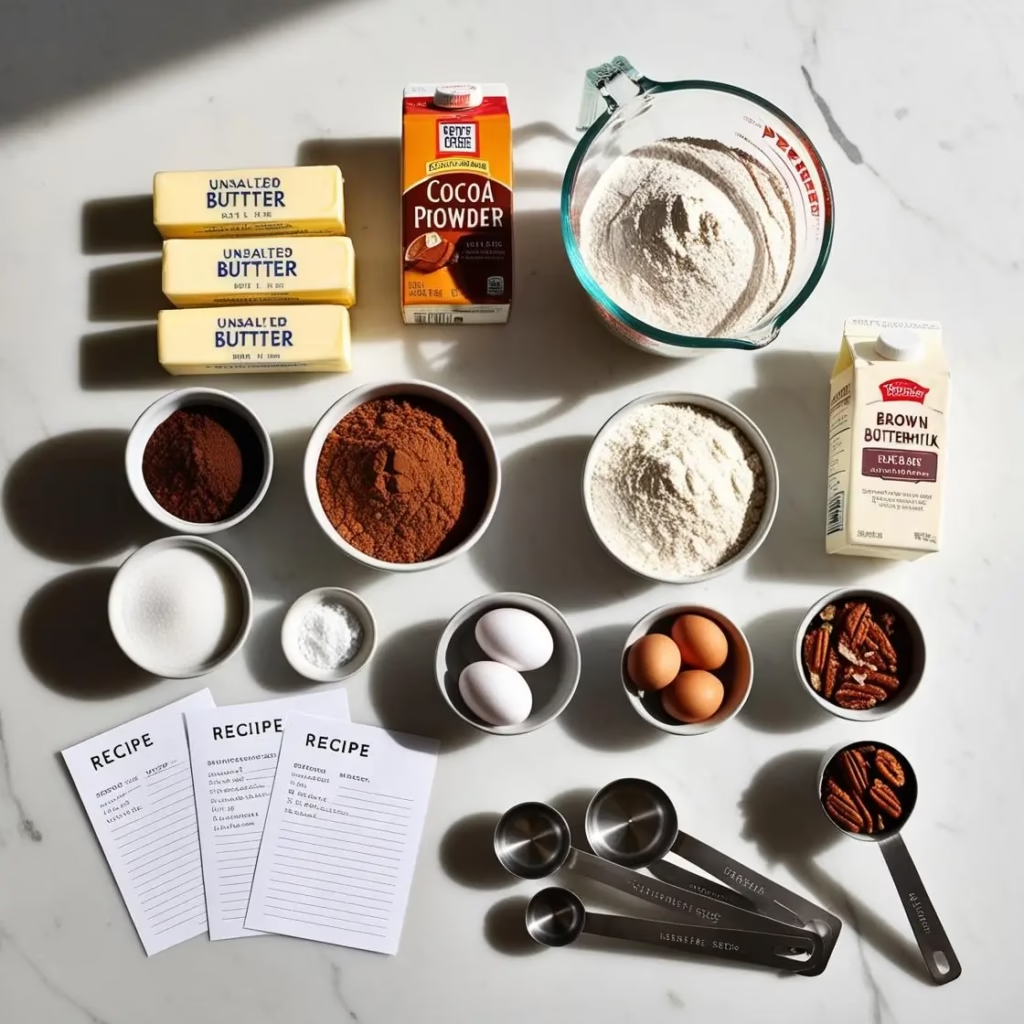
How to Make Texas Sheet Cake at Home
Preparing the Cake
- Preheat and prepare: Begin by preheating your oven to 350°F (175°C). Lightly grease your sheet pan or line with parchment paper for easy removal.
- Combine dry ingredients: In a large mixing bowl, whisk together flour, sugar, baking soda, salt, and cinnamon until well combined.
- Create chocolate mixture: In a medium saucepan over medium heat, combine butter, water, and cocoa powder. Bring to a boil while stirring constantly to prevent scorching. This crucial step helps bloom the cocoa, intensifying the chocolate flavor.
- Combine wet and dry: Pour the hot chocolate mixture over the dry ingredients and stir until just combined.
- Add remaining wet ingredients: Add buttermilk, eggs, and vanilla to the batter, stirring until smooth. Don’t overmix; stop when ingredients are just incorporated to avoid a tough cake.
- Bake: Pour the batter into your prepared pan, spreading evenly to corners. Bake for 18-22 minutes. The cake is done when a toothpick inserted in the center comes out clean or with a few moist crumbs.
Preparing the Frosting
- Begin frosting preparation: About 5 minutes before the cake is done baking, start preparing your frosting. Timing is essential for the signature Texas Sheet Cake texture.
- Create base: In a medium saucepan, combine butter, cocoa powder, and milk. Bring to a boil over medium heat, stirring constantly.
- Add remaining ingredients: Remove from heat and whisk in powdered sugar and vanilla until smooth. If using pecans, stir them in at this point.
- The crucial pour: As soon as the cake comes out of the oven, pour the warm frosting evenly over the hot cake. This step cannot be delayed – the warm frosting must meet the warm cake.
- Spread quickly: Use an offset spatula to quickly spread the frosting to the edges before it begins to set.
- Cool and set: Allow the cake to cool at room temperature for at least 30 minutes before cutting, though many Texans insist the first piece can be enjoyed while still warm.
Visual Indicators of Perfection
- The cake should spring back slightly when touched
- Edges will just begin to pull away from the sides of the pan
- Surface will appear matte rather than wet or shiny
- Frosting should set with a slight sheen that’s neither dull nor overly glossy
Common Pitfalls to Avoid
- Overbaking: Results in dry cake – err on the side of slightly underbaking
- Delayed frosting: Always prepare frosting while cake bakes to pour immediately
- Overmixing batter: Creates tough cake – stir just until ingredients are incorporated
- Incorrect pan size: Alters baking time and texture – stick to recommended dimensions
- Temperature extremes: Too hot or cold environments affect frosting setting
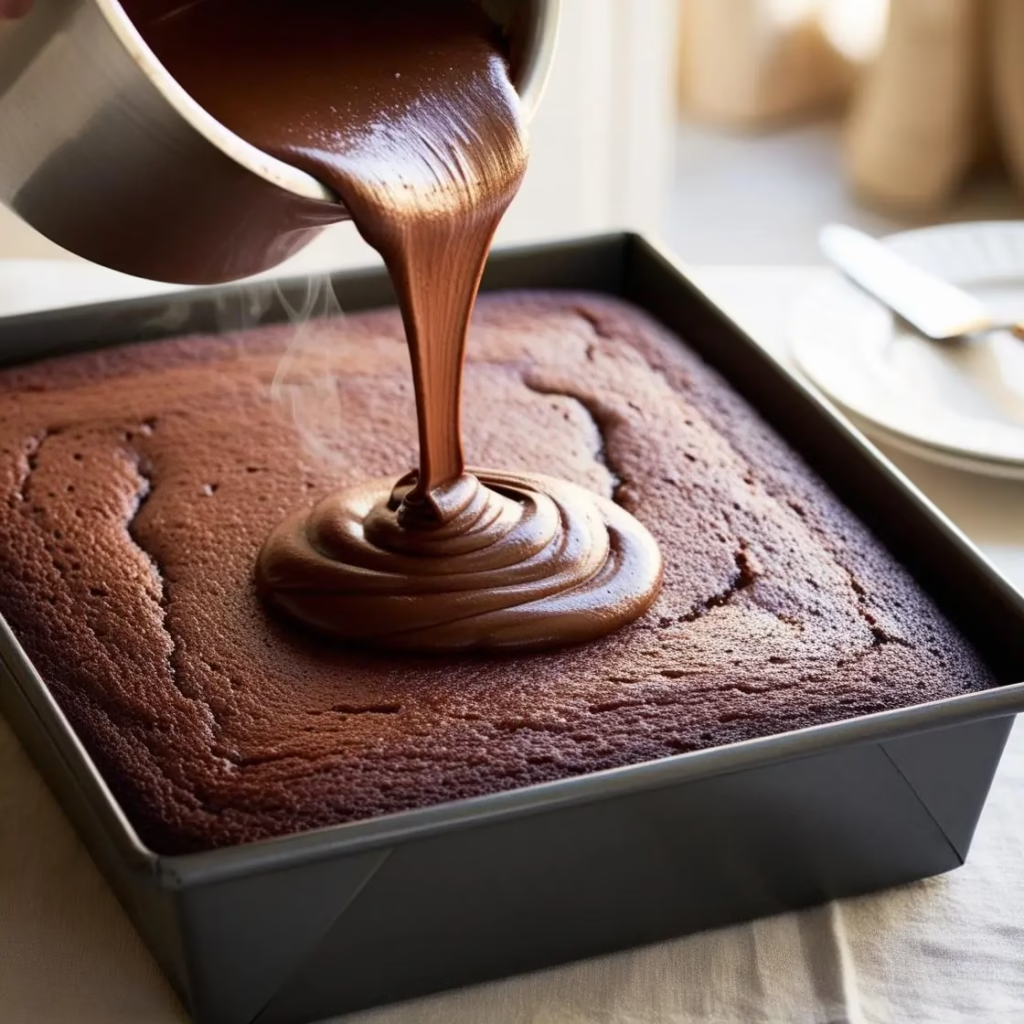
Pro Tips for Texas Chocolate Sheet Cake Success
- Measure flour correctly: Spoon and level rather than scooping directly with measuring cup
- Room temperature eggs: Incorporate more evenly into batter
- Don’t substitute Dutch-process and natural cocoa powder interchangeably: They react differently with leavening agents
- Tap pan gently before baking: Removes air bubbles for more even texture
- Pour frosting in even strokes: Start from the center and work outward
- Keep frosting warm: If it begins to thicken before application, return to low heat briefly
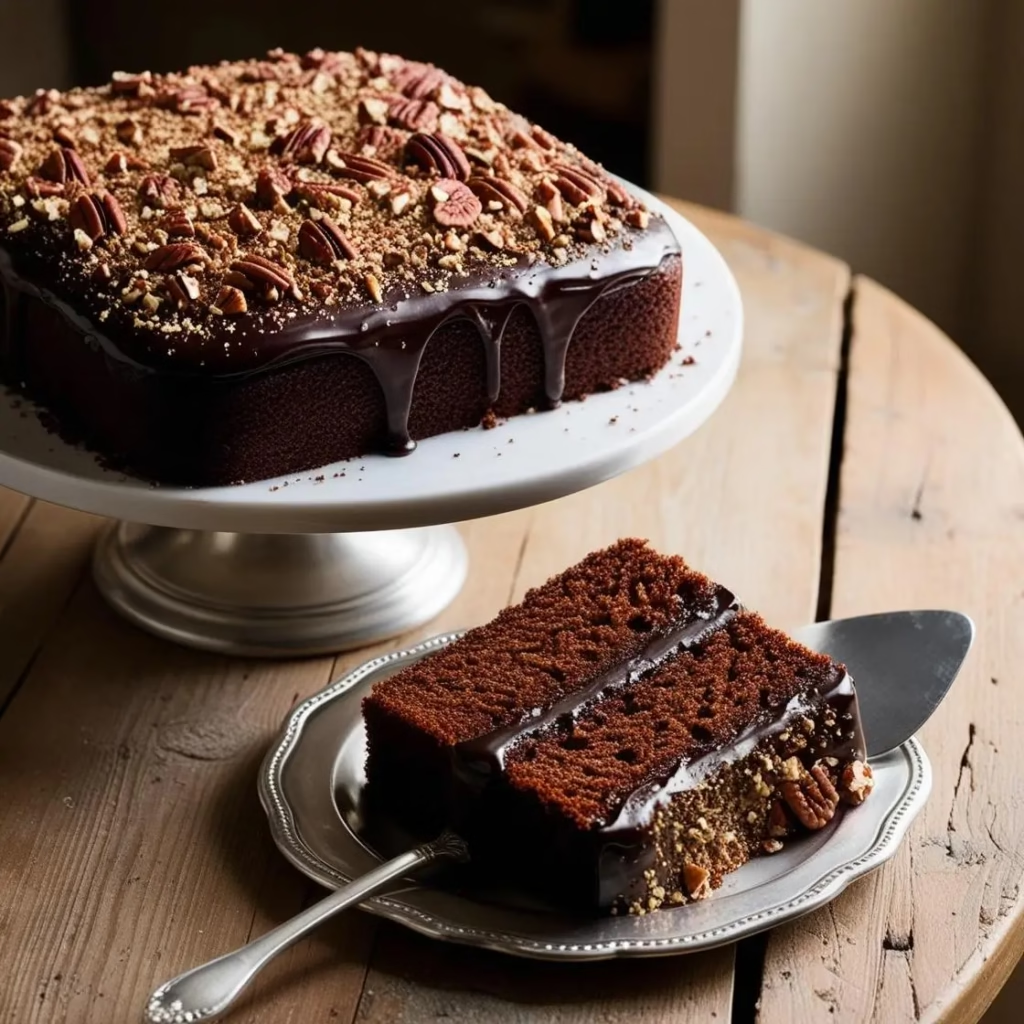
Storage and Serving Recommendations
- Texas Sheet Cake stores beautifully at room temperature for up to 3 days
- Cover with aluminum foil rather than plastic wrap to prevent condensation on frosting
- Keep away from direct sunlight or heat sources
- Allow cake to cool completely before covering to prevent sogginess
- Refrigeration extends shelf life to 5-7 days
- Bring slices to room temperature before serving for best texture and flavor
- If refrigerating, place toothpicks around cake edges before covering to prevent frosting from sticking to wrap
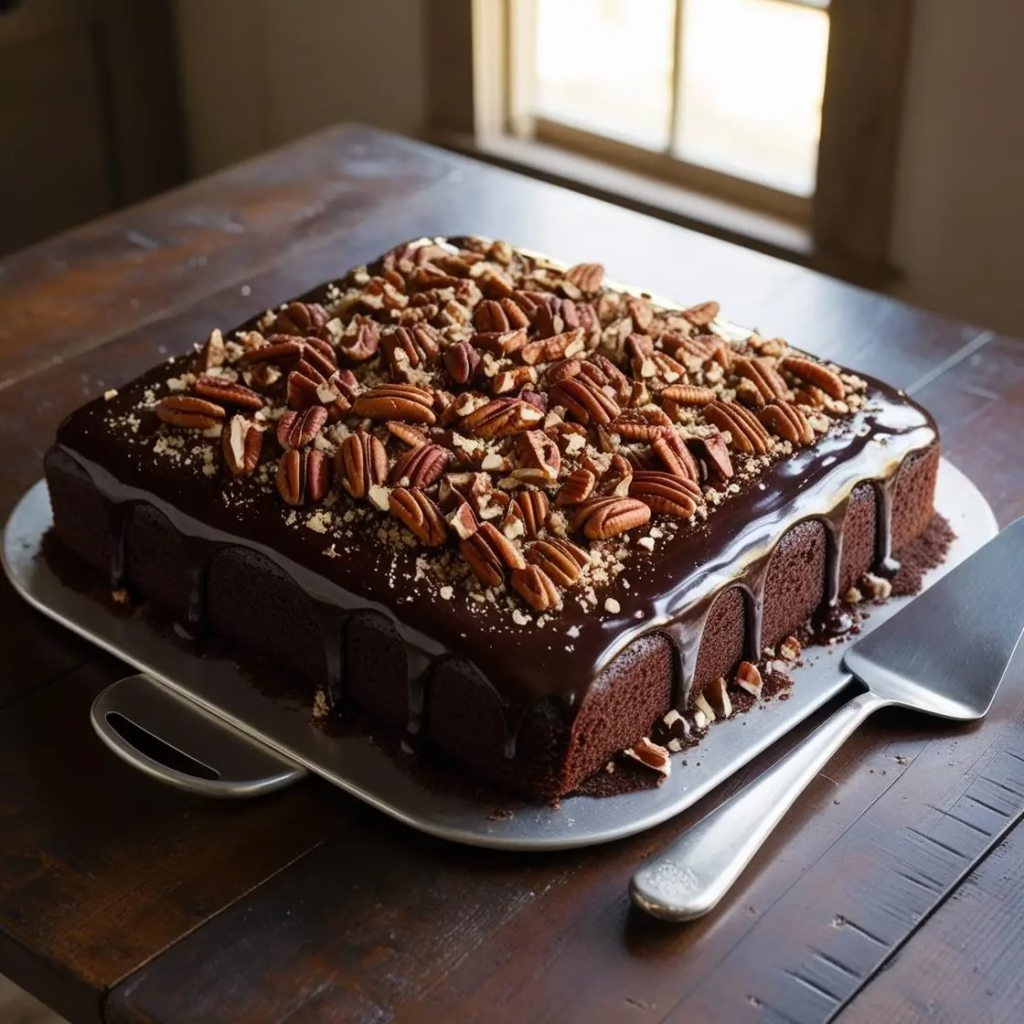
Nutrition Information and Considerations
Nutrition Per Standard Serving (Based on 24 servings per sheet cake):
- Calories: Approximately 280-320 per piece
- Total Fat: 14-16g (Saturated Fat: 7-9g)
- Cholesterol: 45-55mg
- Sodium: 120-150mg
- Total Carbohydrates: 40-45g (Dietary Fiber: 1g, Sugars: 30-35g)
- Protein: 2-3g
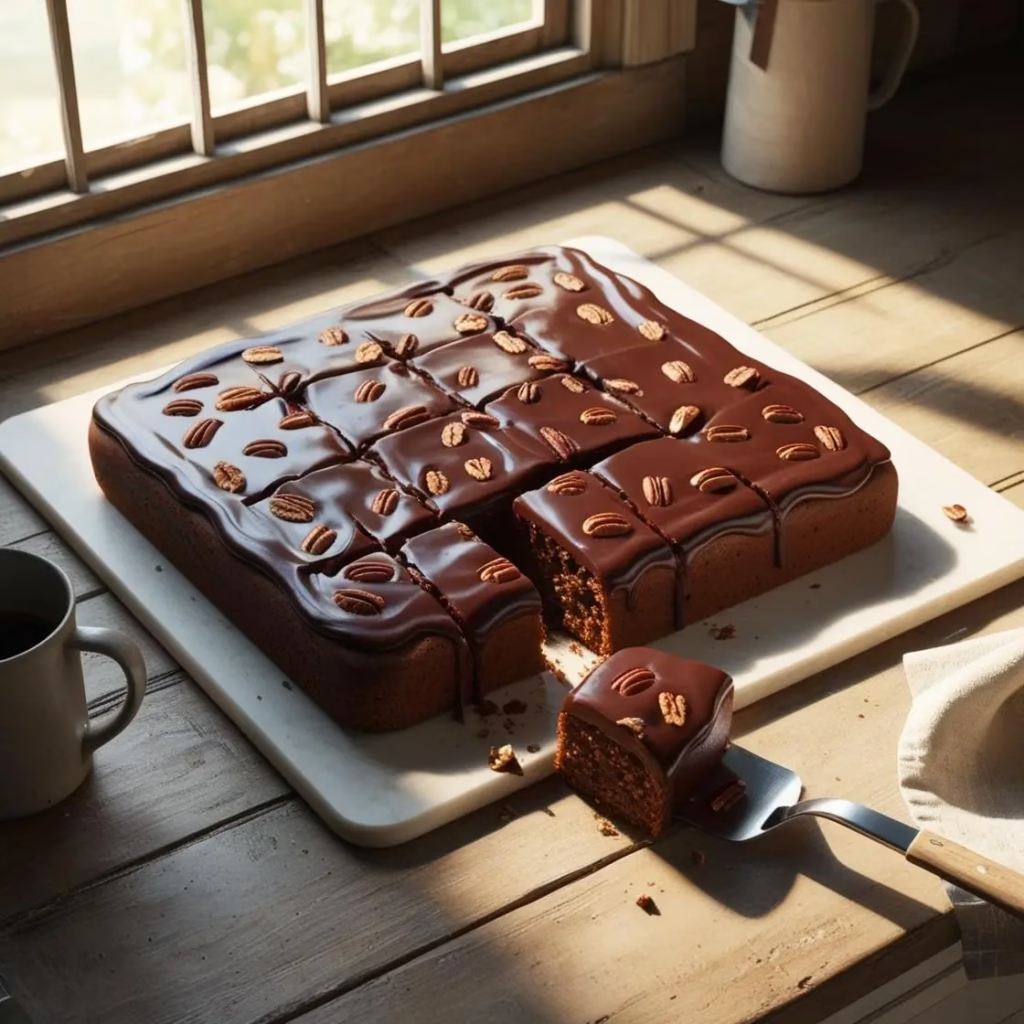
Other Breakfast Recipe

The Ultimate Texas Sheet Cake stands as a testament to the beauty of American baking traditions—uncomplicated yet spectacular, accessible yet memorable. What began as a practical solution for feeding hungry crowds has evolved into a cherished cultural touchstone that spans generations and transcends regional boundaries.
The magic of Texas Sheet Cake lies in its perfect balance of opposites: rich yet light, sweet yet complex, impressively delicious yet remarkably simple to prepare. The signature technique of pouring warm frosting over warm cake creates that distinctive texture that cannot be replicated with any other method.
I encourage you to not only make this recipe but to share it—both the physical cake and the knowledge of how to create it. Invite someone younger into the kitchen as you prepare it, explaining the crucial moments and tiny details that make all the difference. In doing so, you’ll ensure this beloved chocolate tradition continues to bring joy for generations to come.
The Ultimate Texas Sheet Cake isn’t just dessert; it’s a slice of American culinary heritage served on a sheet pan, generously frosted with hospitality and tradition.
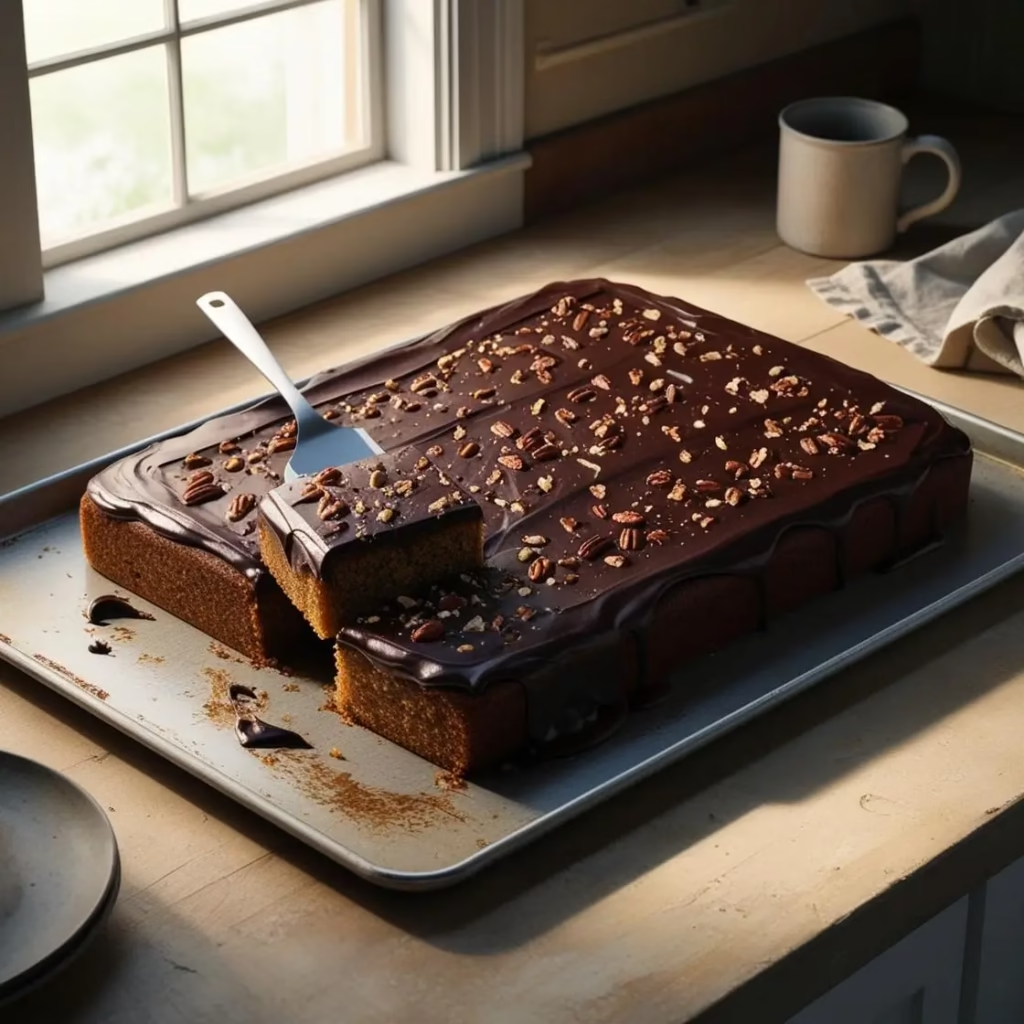
Texas Sheet Cake Recipe: The Ultimate Guide for a Perfectly Moist Cake
Description
This Ultimate Texas Sheet Cake delivers pure chocolate bliss in every bite. The thin, tender cake boasts a moist, velvety crumb with subtle notes of cinnamon that enhance rather than compete with the rich chocolate flavor
Ingredients
For the Cake:
For the Frosting:
Instructions
- For the Cake:
- Preheat oven to 350°F (175°C). Grease a 15×10-inch jelly roll pan or 18×13-inch sheet pan.
- In a large bowl, whisk together flour, sugar, baking soda, salt, and cinnamon.
- In a medium saucepan, combine butter, water, and cocoa powder. Bring to a boil over medium heat, stirring constantly.
- Pour hot chocolate mixture over dry ingredients and mix until just combined.
- Add buttermilk, eggs, and vanilla; stir until smooth.
- Pour batter into prepared pan and spread evenly.
- Bake for 18-22 minutes or until toothpick inserted in center comes out clean.
- For the Frosting:
- About 5 minutes before cake is done, combine butter, milk, and cocoa powder in a medium saucepan.
- Bring mixture to a boil over medium heat, stirring constantly.
- Remove from heat; whisk in powdered sugar and vanilla until smooth.
- Stir in pecans if using.
- Pour warm frosting over hot cake immediately after removing from oven.
- Spread quickly to edges before frosting begins to set.
- Allow to cool for at least 30 minutes before cutting.
Notes
- Storage: Cover and store at room temperature for up to 3 days, refrigerate for up to 1 week, or freeze for up to 3 months.

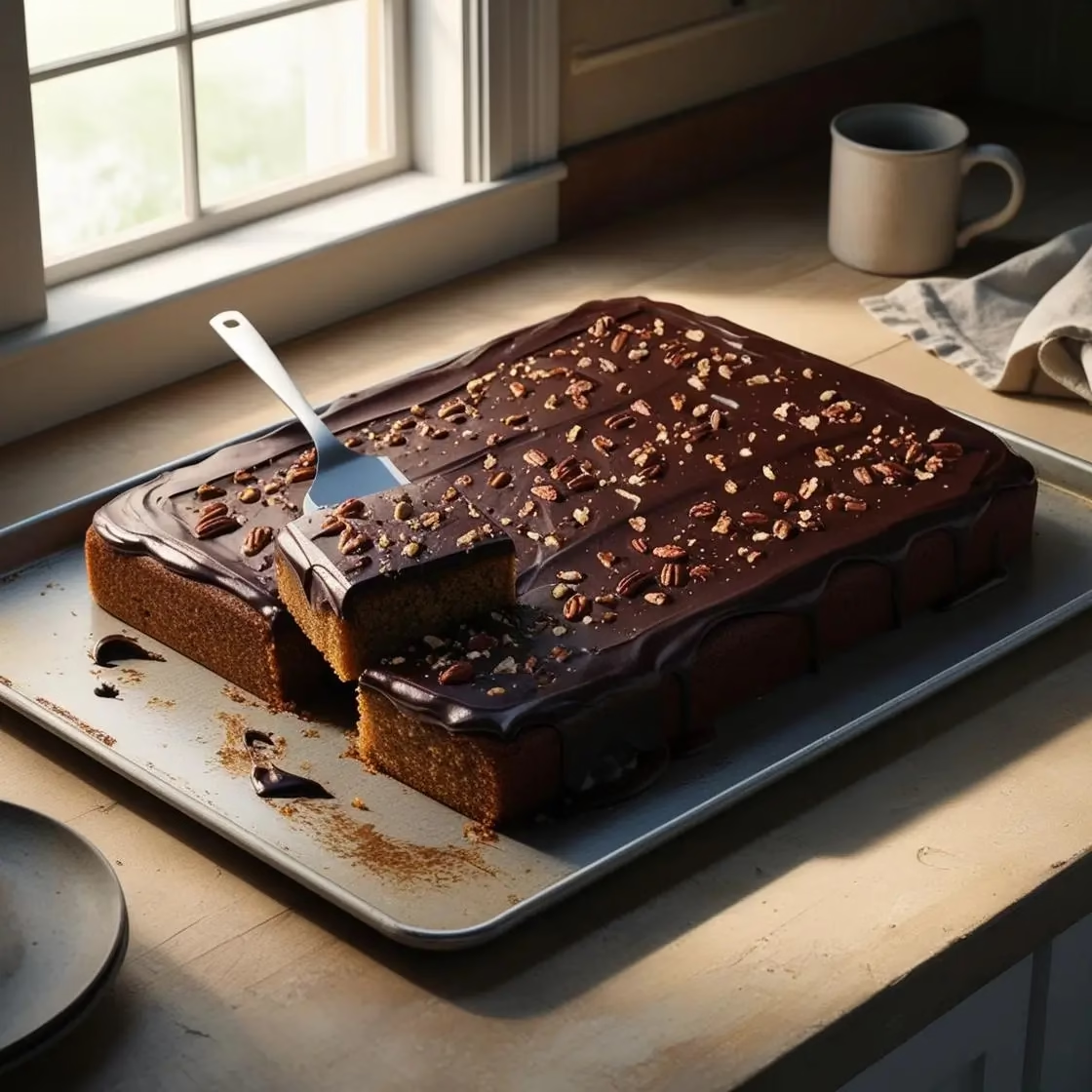
février 18, 2025 at 3:05 pm[…] Texas Sheet Cake Recipe […]
mars 15, 2025 at 11:43 pmYour blog is a treasure trove of priceless information; it’s truly worth discovering.
mars 16, 2025 at 1:06 pmThis post hit the nail on the head; that’s exactly what I was seeking.